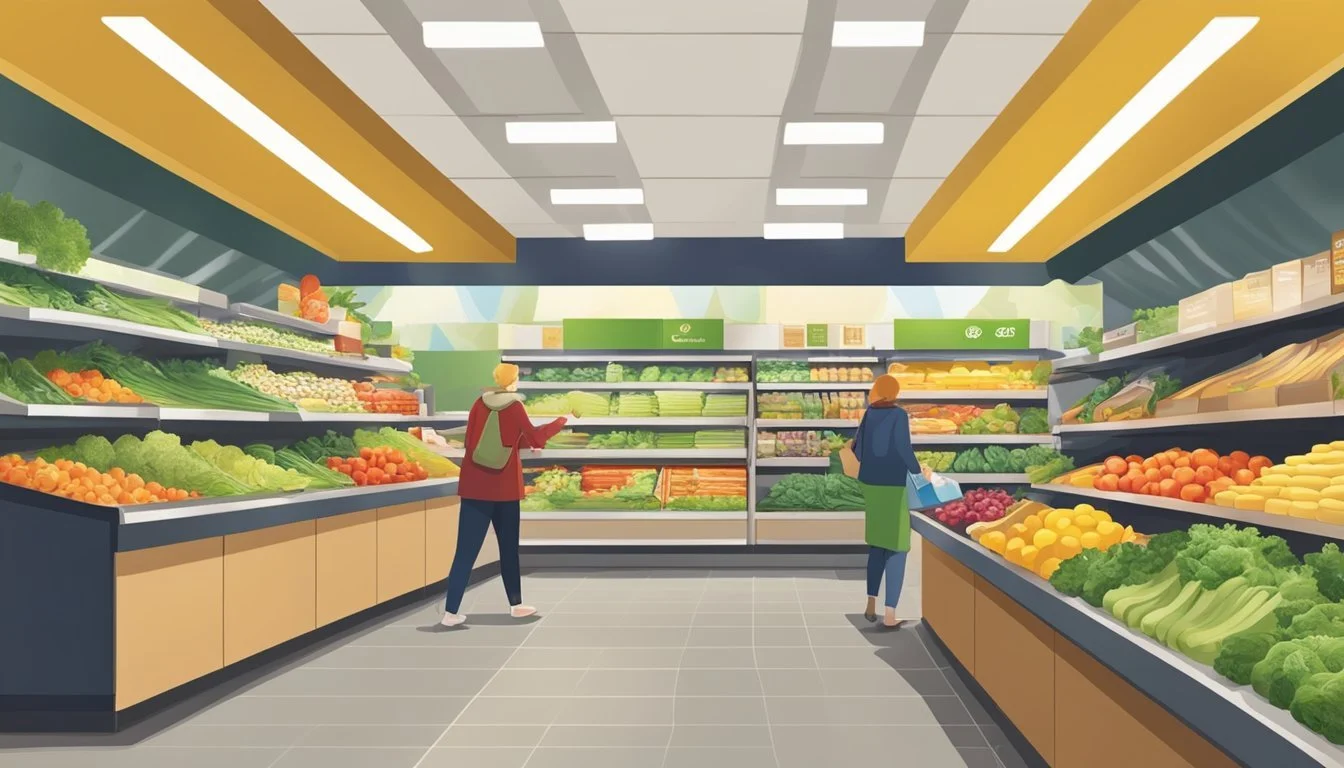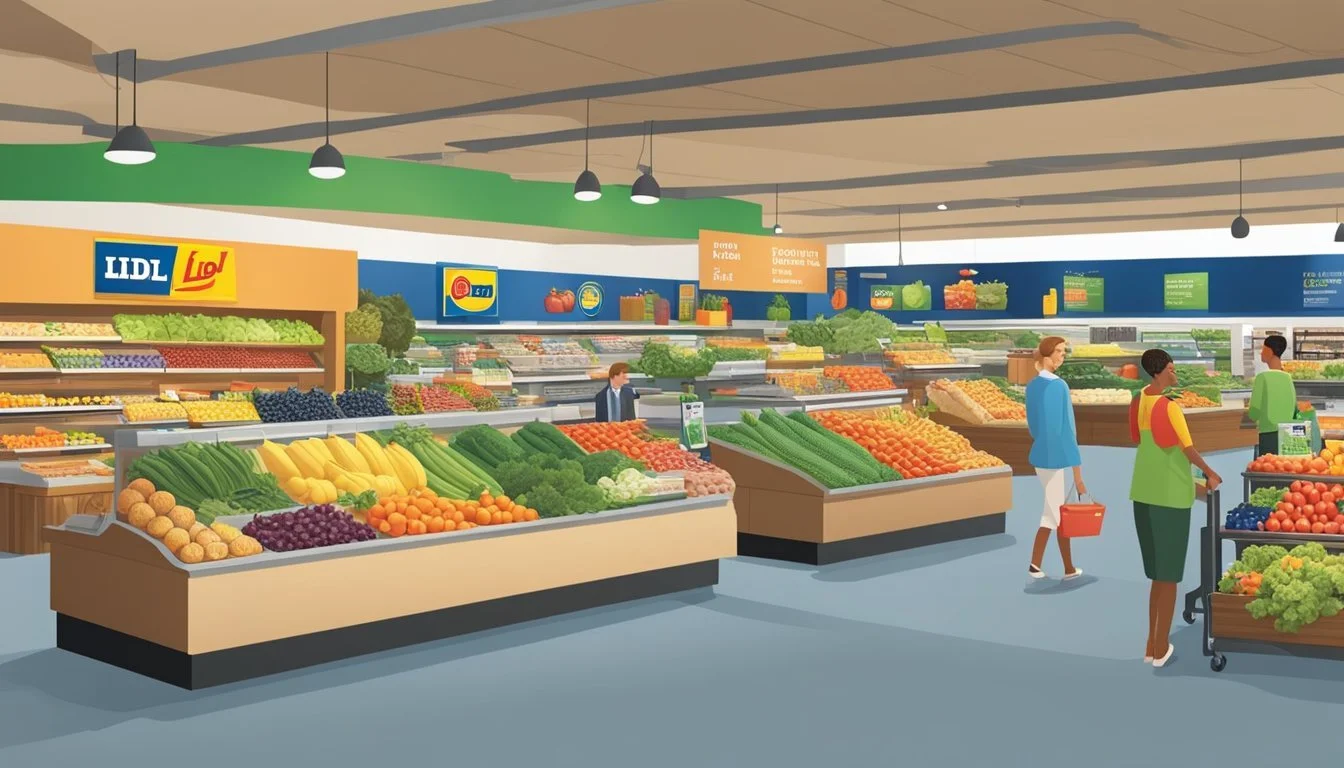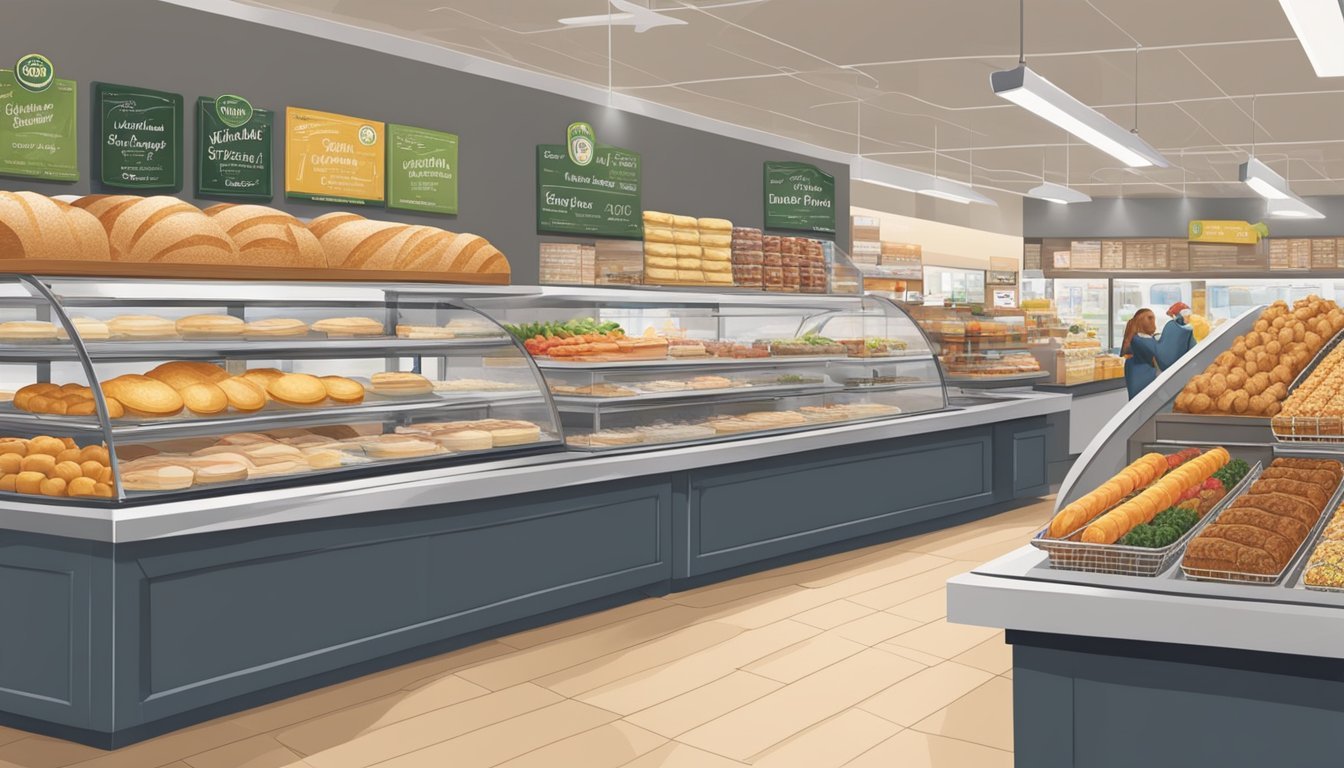Lidl vs Whole Foods
A Comprehensive Comparison of Price and Quality
Lidl and Whole Foods Market represent two distinct approaches to grocery shopping. Lidl, a German discount supermarket chain, focuses on offering low prices and efficiency. Whole Foods, an American retailer known for its organic and natural products, emphasizes quality and health-conscious options.
The choice between Lidl and Whole Foods largely depends on individual priorities, with Lidl typically providing better prices and Whole Foods offering a wider selection of premium, organic products. Lidl's no-frills approach and limited product range allow for significant cost savings, while Whole Foods' extensive selection of organic and specialty items caters to health-conscious consumers willing to pay more for quality.
Geographical availability also plays a role in this comparison. Whole Foods has a widespread presence across the United States, while Lidl's operations are primarily concentrated on the East Coast. This difference in accessibility may influence shoppers' decisions based on their location and convenience factors.
Company Overviews
Lidl and Whole Foods Market have distinct origins and growth trajectories that have shaped their current market positions. These two grocery chains represent different approaches to retail food sales, with unique philosophies and target audiences.
History of Lidl
Lidl's roots trace back to 1930s Germany when Josef Schwarz became a partner in Südfrüchte Großhandlung Lidl & Co., a fruit wholesaler. In 1973, Josef's son Dieter Schwarz opened the first Lidl discount store in Ludwigshafen. The company expanded rapidly across Europe in the 1990s, focusing on a no-frills shopping experience and competitive pricing.
Lidl entered the U.S. market in 2017, targeting the East Coast. The chain's strategy revolves around a limited selection of mostly private-label products, efficient store layouts, and cost-cutting measures to offer low prices. Lidl's growth in the U.S. has been steady but measured, with a focus on carefully chosen locations and market adaptation.
History of Whole Foods
Whole Foods Market began in 1978 when John Mackey and Renee Lawson borrowed $45,000 to open a small natural foods store in Austin, Texas. The company expanded through mergers and acquisitions, becoming a pioneer in the natural and organic foods market. Whole Foods went public in 1992, fueling further growth.
The chain built its reputation on high-quality, organic products and a focus on health-conscious consumers. In 2017, Amazon acquired Whole Foods for $13.7 billion, bringing technological innovations and expanded online offerings to the brand. This acquisition marked a significant shift in the grocery industry, blending traditional retail with e-commerce capabilities.
Store Presence and Expansion
Lidl and Whole Foods Market have distinct approaches to store presence and expansion. Their strategies reflect different target markets and growth objectives, shaping their current footprints and future plans.
Lidl's Growth Trajectory
Lidl focuses its U.S. expansion primarily on the East Coast. The German discount retailer entered the American market in 2017 and has grown steadily since. As of 2023, Lidl operates approximately 170 stores in the United States.
The company continues to open new locations, with plans to increase its presence in key markets. Lidl's expansion strategy often involves renovating existing retail spaces or constructing new buildings in high-traffic areas.
Lidl competes directly with other discount chains like Aldi and traditional supermarkets such as Kroger and Walmart. Its compact store format and focus on private-label products allow for rapid expansion and efficient operations.
Whole Foods Market Expansion
Whole Foods Market boasts a more extensive U.S. presence compared to Lidl. The organic grocer operates over 500 stores across North America and the UK. Whole Foods has a strong foothold in major metropolitan areas and affluent suburbs.
Since Amazon's acquisition in 2017, Whole Foods has pursued a measured expansion strategy. The company focuses on optimizing existing locations and strategically opening new stores in underserved markets.
Whole Foods targets health-conscious consumers and competes with upscale grocery chains and natural food retailers. Its expansion often involves larger format stores with extensive prepared food sections and in-store dining options.
The company has also explored smaller format stores in urban areas to capture more of the convenience shopping market. This approach allows Whole Foods to compete with Target's small-format stores and local specialty grocers.
Pricing and Value Propositions
Lidl and Whole Foods offer distinct pricing strategies and value propositions to attract different customer segments. Their approaches to everyday prices, discounts, and loyalty programs reflect their unique market positioning and target demographics.
Comparing Everyday Prices
Lidl generally offers lower everyday prices compared to Whole Foods. The discount grocer focuses on providing affordable options across various product categories. Whole Foods, known for its premium offerings, typically has higher price points.
A basket of common household groceries at Lidl can be significantly cheaper than at Whole Foods. For example, organic produce like avocados and baby spinach often cost less at Lidl. The price difference extends to staples such as milk, eggs, and chicken.
Whole Foods' pricing reflects its emphasis on high-quality, organic, and specialty items. While more expensive, the store appeals to shoppers seeking premium products and a curated shopping experience.
Discounts and Deals
Both stores offer promotional deals, but their approaches differ. Lidl frequently rotates special offers on various products, including non-food items. These deals can provide substantial savings on everyday essentials and seasonal goods.
Whole Foods' discount strategy often focuses on organic and natural products. The store runs regular promotions, particularly for Amazon Prime members. These deals can make some premium items more accessible to budget-conscious shoppers.
Lidl's weekly specials and limited-time offers encourage repeat visits. Whole Foods' targeted discounts aim to provide value while maintaining its upscale image.
Memberships and Loyalty Programs
Lidl does not have a traditional loyalty program. Instead, it relies on consistently low prices and rotating deals to attract and retain customers. This approach aligns with its no-frills, budget-friendly image.
Whole Foods leverages Amazon Prime for its loyalty program. Prime members enjoy exclusive discounts, extra savings on sale items, and special deals. This integration with Amazon's ecosystem adds value for frequent Whole Foods shoppers.
The Whole Foods-Amazon Prime partnership offers additional perks like free delivery on eligible orders. This program aims to enhance customer loyalty and increase shopping frequency among Prime subscribers.
Product Assortment and Quality
Lidl and Whole Foods Market offer distinct product assortments, catering to different consumer preferences. Their approaches to quality, organic offerings, and brand strategies shape the shopping experience at each store.
Assortment Strategies
Lidl focuses on a curated selection of products, emphasizing efficiency and value. The store typically stocks around 3,500 items, with a mix of everyday essentials and rotating specialty products. Whole Foods Market, in contrast, provides a more extensive range of about 30,000 products. This wider selection includes specialty and gourmet items, catering to diverse dietary needs and preferences.
Lidl's compact stores feature a limited but carefully chosen assortment, while Whole Foods offers a broader shopping experience with more variety in each category.
Quality of Goods
Whole Foods Market is known for its stringent quality standards, prohibiting over 100 ingredients commonly found in other stores. The chain prioritizes natural and organic products, often sourcing from local producers.
Lidl, while offering lower prices, maintains a commitment to quality through its rigorous testing processes. The company emphasizes fresh produce and high-quality private label products.
Both stores prioritize freshness in their produce sections, but Whole Foods typically offers a more extensive selection of organic fruits and vegetables.
Organic and Non-GMO Offerings
Whole Foods Market leads in organic and non-GMO products, with a vast array of options across all departments. The store's commitment to these categories is evident in its "Whole Foods Market Organic" line and strict GMO labeling policies.
Lidl has expanded its organic offerings in recent years, introducing more organic produce and packaged goods. The Simply Nature line features organic and non-GMO products at competitive prices.
While both stores cater to health-conscious consumers, Whole Foods provides a more comprehensive organic shopping experience.
Store Brands vs. Name Brands
Lidl emphasizes its private label brands, which make up about 90% of its product range. These store brands, such as Preferred Selection and Lidl Love, offer quality products at lower prices than national brands.
Whole Foods Market balances store brands with name brands. Its 365 Everyday Value line provides affordable options, while the store also stocks a wide range of premium and specialty brands.
Lidl's approach allows for lower prices overall, while Whole Foods offers more variety between budget-friendly store brands and high-end specialty products.
Shopping Experience
Lidl and Whole Foods offer distinct shopping environments, each catering to different customer preferences. Their approaches to store layout, checkout processes, and customer service reflect their unique brand identities and target markets.
Store Layout and Design
Lidl stores feature a compact, no-frills design focused on efficiency. Aisles are wide and clearly organized, with products displayed in their original shipping boxes to streamline restocking. The layout emphasizes quick navigation, with a central aisle showcasing weekly special offers.
Whole Foods, in contrast, opts for a more spacious and aesthetically pleasing environment. Stores are larger, with dedicated sections for organic produce, artisanal cheeses, and prepared foods. The design incorporates natural materials and warm lighting to create an inviting atmosphere.
Both retailers prioritize fresh produce displays near the entrance. Lidl's produce section is smaller but well-stocked with affordable options. Whole Foods offers a vast array of organic and specialty fruits and vegetables, often with local farm highlights.
Checkout Efficiency
Lidl employs a lean staffing model with self-checkout options to minimize wait times. Cashiers are trained to scan items quickly, and customers bag their own groceries to keep lines moving.
Whole Foods provides both staffed lanes and self-checkout kiosks. Their checkout process can be slower due to the higher volume of items per transaction and the careful handling of delicate produce and prepared foods.
During peak hours, Lidl typically has shorter queues due to its efficient system and smaller average basket size. Whole Foods may experience longer waits but often opens additional lanes to manage flow.
Customer Service
Lidl's approach to customer service is straightforward and minimal. Staff members are available to assist but focus primarily on keeping shelves stocked and lines moving. The emphasis is on self-service and efficiency.
Whole Foods invests more heavily in customer service. Employees are knowledgeable about products and can offer recommendations on everything from wine pairings to dietary alternatives. Service counters for meat, seafood, and cheese provide personalized assistance.
Whole Foods also offers additional services like catering, cooking classes, and in-store dining options. Lidl's services are limited to essential grocery shopping needs, aligning with its low-price business model.
Consumer Perception and Brand Reputation
Lidl and Whole Foods have distinct reputations in the grocery market, shaping consumer perceptions and loyalty. Customer satisfaction, market standing, and corporate values play crucial roles in how shoppers view these retailers.
Customer Satisfaction Surveys
Recent surveys reveal high customer satisfaction for both Lidl and Whole Foods. Lidl scores well for affordability and product quality, especially in its private-label offerings. Whole Foods consistently ranks high for organic and health-focused products.
A 2023 survey found:
Lidl: 87% customer satisfaction
Whole Foods: 89% customer satisfaction
Trader Joe's and Wegmans often outperform both in overall satisfaction ratings. Publix also maintains strong customer approval, particularly in the southeastern United States.
Market Reputation
Whole Foods has built a reputation as a premium, health-conscious grocer. Its 365 brand is widely recognized for quality organic products. Lidl, newer to the U.S. market, is known for competitive pricing and an efficient shopping experience.
Market perception highlights:
Whole Foods: Upscale, organic-focused
Lidl: Budget-friendly, quality private labels
Health-conscious consumers often gravitate towards Whole Foods, while budget-minded shoppers appreciate Lidl's value proposition.
Social Responsibility
Both companies emphasize social responsibility, but with different approaches. Whole Foods focuses on sustainable sourcing, organic agriculture, and community giving. Lidl highlights waste reduction, ethical sourcing, and affordable healthy options.
Key initiatives:
Whole Foods: Local producer support, non-GMO advocacy
Lidl: Plastic reduction, fair trade products
Consumers increasingly factor these efforts into their shopping choices, influencing overall brand perception and loyalty.
Bakery, Deli, and Special Sections
Lidl and Whole Foods offer distinct experiences in their bakery, deli, and specialty sections. Each store caters to different customer preferences with varying product ranges and quality levels.
Bakery Offerings
Lidl's bakery section focuses on affordability and convenience. The store offers a self-serve area with fresh-baked bread, pastries, and cookies. Customers can select items using tongs and bags.
Whole Foods, in contrast, provides a more extensive bakery selection. Their offerings include artisanal breads, gourmet cakes, and organic pastries. Many items are baked in-store daily.
Lidl's bakery products are generally less expensive, but may lack the variety found at Whole Foods. Whole Foods emphasizes organic ingredients and specialty items, which often come with higher price tags.
Deli Selections
Lidl's deli section typically features a limited selection of pre-packaged meats and cheeses. The store focuses on popular, everyday options at competitive prices.
Whole Foods boasts a full-service deli counter with a wide range of meats, cheeses, and prepared foods. Customers can request custom cuts and sample products before purchasing.
Whole Foods often carries specialty and locally-sourced deli items. Lidl's deli offerings are more standardized across locations.
Specialty Products
Lidl's specialty section is relatively small, with a rotating selection of international foods and seasonal items. The store occasionally features themed weeks, such as "Italian Week" or "Greek Week."
Whole Foods excels in specialty products, offering an extensive range of organic, vegan, and gourmet items. The store dedicates significant space to health foods, supplements, and eco-friendly products.
Whole Foods provides a broader selection of specialty cheeses, wines, and prepared foods. Lidl's specialty offerings are more limited but often come at lower price points.
Accessibility and Convenience
Lidl and Whole Foods offer distinct approaches to accessibility and convenience. Both stores strive to meet customer needs through various shopping options, store layouts, and customer-friendly policies.
Online Shopping Options
Whole Foods leverages its Amazon ownership to provide extensive online shopping capabilities. Amazon Prime members enjoy free delivery on Whole Foods orders over $35 in select cities. The store's website and mobile app allow for easy browsing and ordering.
Lidl's online presence varies by region. In some areas, Lidl partners with Instacart for home delivery. The company also offers a mobile app for digital coupons and weekly specials. However, Lidl's e-commerce options are generally less developed compared to Whole Foods.
Both stores provide pickup services at select locations, allowing customers to order online and collect groceries without entering the store.
In-Store Navigation
Whole Foods stores typically feature spacious layouts with clear signage. Departments are well-organized, making it easy for shoppers to find specific items. Many locations offer store maps and product locators.
Lidl stores have a more compact design. The layout follows a consistent pattern across locations, which can help regular shoppers navigate quickly. Signage is straightforward, focusing on product categories and special offers.
Both chains prioritize accessibility for customers with disabilities, providing wide aisles and assistance when needed.
Return Policies
Whole Foods has a generous return policy. Customers can return most items with a receipt for a full refund. Even without a receipt, the store often provides store credit or exchanges.
Lidl's return policy is also customer-friendly. They offer a "Lidl Love It Guarantee," allowing customers to return non-food items within 30 days for a full refund. For food items, Lidl encourages customers to bring back any unsatisfactory products.
Both stores train staff to handle returns efficiently, minimizing wait times and ensuring a smooth process for customers.
Final Thoughts
Whole Foods and Lidl cater to different grocery shopping needs and preferences. Whole Foods excels in organic and natural products, offering a premium shopping experience. Its widespread presence in the U.S. makes it accessible to many consumers seeking high-quality, health-conscious options.
Lidl, on the other hand, focuses on providing budget-friendly choices without compromising quality. Its expansion along the East Coast has introduced a new shopping model to American consumers. Lidl's efficient store layout and mix of private-label and name-brand products appeal to cost-conscious shoppers.
Both stores have their strengths. Whole Foods is ideal for those prioritizing organic and specialty items, while Lidl suits shoppers looking to stretch their grocery budget. The choice between the two ultimately depends on individual preferences, location, and financial considerations.
Quality-wise, Whole Foods maintains high standards across its product range. Lidl, despite its lower prices, has garnered praise for the quality of its offerings, particularly in produce and bakery sections.
The shopping experience differs significantly between the two. Whole Foods provides a more curated, upscale environment. Lidl offers a straightforward, no-frills approach that some shoppers find efficient and refreshing.
In terms of choices, Whole Foods typically provides a wider variety of specialty and gourmet items. Lidl, while more limited in selection, still offers a good range of everyday essentials and rotating specialty products.









